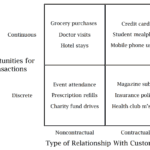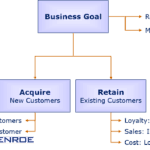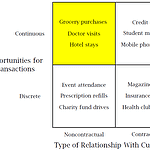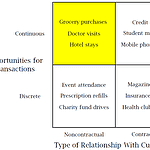When casting around for ways to increase sales there are really only two options: find new customers or sell more to the existing customers.
Of these two the second, sell more to existing customers, is often the easiest and the one with the highest ROI.
Today we’ll talk about why you should be focusing more efforts in this area and how you can improve your success rate.
The Revenue Impact of Cross-Selling
When looking at ways to boost your bottom line, cross-selling to existing customers delivers impressive returns. McKinsey research shows that effective cross-selling strategies can increase revenue by approximately 20% and boost profits by around 30%.
This revenue boost comes from a couple of advantages:
Higher Conversion Rates
The value is compelling – you have a 60-70% probability of selling to an existing customer, compared to just 5-20% for new prospects. This higher success rate means your sales efforts are more efficient and cost-effective.
Increased Customer Lifetime Value
Cross-selling directly impacts your Customer Lifetime Value (CLV) by:
- Increasing the total revenue generated from each customer
- Creating multiple product relationships that enhance customer retention
- Building deeper business relationships that also enhance customer retention
According to HubSpot’s research across North America, Europe, and Asia, cross-selling accounts for an average of 21% of B2B organizations’ total revenues. This represents a significant increase to lifetime value.
Cross-selling is better than finding new customers
Lower Acquisition Costs
When heading out on the customer acquisition trail, the first item of business is finding a likely looking customer so that you can start your sales pitch.
This can often be the most difficult and expensive part of the whole process. The whole advertising industry is based on this one problem of finding a likely prospect.
With cross-selling you already know your customer, and in many cases you know where they live, and some important data about them.
The customer already trusts you.
After finding a prospect, the first barrier in closing a sale is gaining the customer’s trust. Countless “try before you buy”, money back guarantee and trialling campaigns are built and run in order to overcome this single hurdle.
However, when you cross-sell you’re already over this major issue: they’ve tried and they’ve bought so they (may) already trust you.
You know what they want and you’re sure they want it.
They’ve already purchased from you and just by looking back at the data you already know what they want, how often they want it, even what colour they like it in. Plus, you’re sure they want what you sell because they’ve already purchased something similar.
Yes, I know that this is a bit of a simplification but the basic approach is valid. When you cross-sell you already know that they have a need.
Cross-selling often drives increased retention rates
Many research studies, and our own experience at analysing our client’s data, have shown us that the more products a customer purchases from you the longer they will continue to purchase from you.
If you manage to cross sell to your customers you get the added advantage of keeping them longer (all things being equal) and a double bonus to the bottom line.
How to be successful at cross-selling
Okay so you’re convinced, cross-selling is a good thing to do.
So how do you do it well?
Make sure you have happy customers
Yes, it’s sad but true, you need to have happy customers for those customers to purchase again from you. It stands to reason that cross-selling will be easier if you’re customers are already loyal and you have provided them with products or services that are of value.
The lesson here is if you have dissatisfied customers the last thing you should do is try to cross-sell to them – it will just make matters worse. First fix your customer satisfaction issue then move onto cross-selling.
Right message at the right time
Many organisations have transactional data that can be used to identify the next logical product to discuss with the customer. Remember that you know more about the customer than other organisations. If you’re not using this information you’re making life harder than it needs to be.
However, make sure that you don’t become a product pusher to your customers.
Too many times customers end up on the receiving end of a stream of direct mail that feels to them like non-thinking direct marketing campaigns.
Yes, we know that the easiest thing to do is a data extract of your “best” customers and send them the latest product that you’re trying to sell. But, all that does is train them to ignore your messages and loses you sales in the long run.
A better approach is to look at the customer through a customer needs lens. The chart below is a very simple example of how bank might change its view of a customer from a mortgage, credit card, and deposit customer to a “house buyer” or “holiday goer”.
By using this approach you are speaking to the customer in their own terms and are much more likely to cut through.
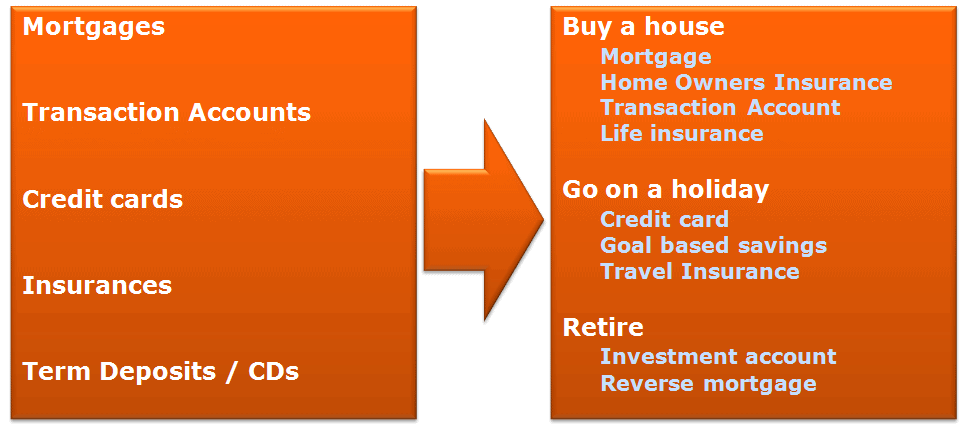
By the way this may require you to partially or completely re-organise some of the product silos that you have in your organisation but it will mean that you are much more successful long term.
Make sure it’s profitable
Sounds obvious, but it’s not always the case.
For example, a bank might successfully cross-sell a money market account to an existing checking account holder, only to have the customer use her new account to hold surplus funds from her transaction account—thus increasing neither share of wallet nor profitability.
In fact, an analysis of customer holdings for 14 of the largest Australian financial institutions reveals no relationship between the average number of products they have per customer and their average share of wallet.
The message is clear – make sure what you’re doing is profitable.
Measure the right drivers and KPIs
When you implement your cross-selling approach make sure that you measure the correct KPIs and business drivers.
As a start: products per customer, accounts per customer, policies per customer all sound good but can be very misleading and drive the wrong staff behaviour.
For instance we had one banking client who couldn’t work out why their profit was not going up. They had a great customer cross-sell program, staff were incentivised based on accounts per customer and that figure was increasing nicely. Everyone was happy except the CFO.
It wasn’t until we dug a bit deeper that we found lots of silent attrition, i.e., accounts that were open with just a few dollars in them.
Some more investigation and we discovered that when customers wanted to change the type of account that they had, front line staff were encouraging them to keep the old account and open a new account. Great for the accounts per customer KPI, not so good for the company profit!
How to Enable Your Sales Team for Cross-Selling
Like any sales initiative, cross-selling success depends heavily on having a well-prepared and motivated sales team.
Here are the key elements to address to ensure your team can execute effectively.
Create the right culture
Sometimes the internal culture can work against your cross-selling goals.
I’ve seen partner based organisations (Law firms, Consulting firms) where the partner of one area considers that they own a specific customer and don’t want to let another group have access to the them for cross-sell purposes. Strange but true.
Make sure that you reward (directly and indirectly) internal behaviours that support cross-selling.
Train your team thoroughly
Your sales team needs more than just product knowledge to cross-sell effectively. They must understand how your products work together and, more importantly, how they solve customer problems in combination.
Make sure your training includes real customer scenarios and practice sessions so the team can confidently recommend complementary products.
Provide the right tools
Cross-selling requires your team to have the right information at their fingertips.
Implement systems that give them easy access to:
- Customer purchase history
- Product compatibility information
- Typical product combinations that work well together
- Customer behaviour data that signals cross-sell opportunities
Align compensation with cross-selling goals
If you want your team to focus on cross-selling, your compensation structure needs to reflect this priority.
Consider implementing specific incentives for successful cross-sells, not just rewarding total sales volume. This ensures your team is motivated to look for these opportunities with every customer interaction.
Monitor and measure success
Put the right metrics in place to track cross-selling success. This isn’t just about tracking additional revenue – you need to monitor metrics like:
- Team member success rates
- Products per customer
- Cross-sell conversion rates
- Customer satisfaction post cross-sell
Use Product Bundling: A Smart Cross-Selling Strategy
Product bundling is a sales strategy where you package multiple products together and sell them as a single unit, typically at a price lower than buying each item separately. For instance, rather than selling a printer, toner, and paper separately, you might offer them as an “office printing bundle” at a discounted rate.
B2B Examples of product bundling include
- HubSpot’s Small Business Bundle: The Starter edition of each HubSpot product, built for startups and small businesses.
- Industrial machinery bundled with preventive maintenance packages and spare parts
- Marketing services bundle combining website design, SEO, and content creation
Here are some areas to consider in your product bundling strategy.
Create logical combinations
Ensure your product combinations make practical sense to the customer. Don’t just bundle products because you want to move inventory. Look for natural product combinations that:
- Solve related customer problems
- Work together to improve efficiency
- Provide end-to-end solutions for specific tasks
- Reduce the customer’s need to source from multiple suppliers
Price bundles strategically
While bundles should offer some cost advantage to customers, they need to remain profitable for your business. Consider:
- Offering a modest discount (typically 10-25%) on the bundle compared to individual item pricing
- Creating tiered bundle options at different price points
- Including high-margin items with lower-margin ones to maintain profitability
Target bundles to specific customer segments
Not all bundles will appeal to every customer. Create targeted bundle offerings based on logical customer needs – for instance:
- Industry-specific needs
- Company size requirements
- Known customer workflows
- Historical purchasing patterns
Make the value clear
When presenting bundles to customers, clearly articulate:
- The combined cost savings
- How the products work together
- The efficiency gains from purchasing as a package
- The convenience of a single purchase decision


